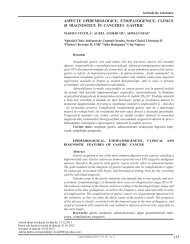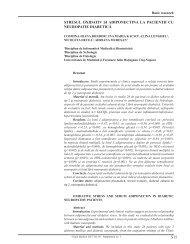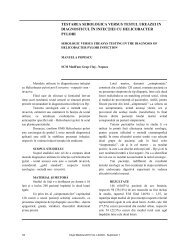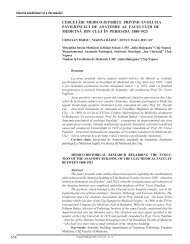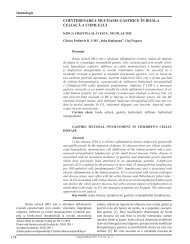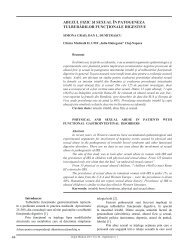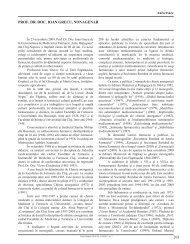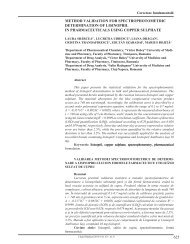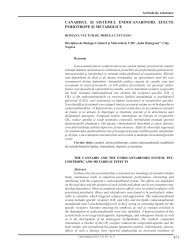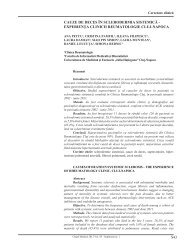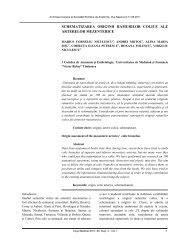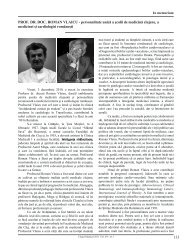You also want an ePaper? Increase the reach of your titles
YUMPU automatically turns print PDFs into web optimized ePapers that Google loves.
DETERMINATION OF CAFFEINE FROM INSTANT<br />
COFFEE AND CAPPUCCINO BY LIQUID<br />
CHROMATOGRAPHY – MASS SPECTROMETRY<br />
LORENA FILIP 1 , L. VLASE 2 , IOANA MÎNDRUŢĂU 3 , DOINA MIERE 1 ,<br />
DANIELA HANGANU 4<br />
Faculty of Pharmacy, University of Medicine and Pharmacy “<strong>Iuliu</strong> <strong>Haţieganu</strong>”,<br />
Cluj-Napoca<br />
1 Department of Environmental Chemistry<br />
2 Department of Pharmaceutical Technology and Biopharmaceutics<br />
3 Department of Physical Chemistry.<br />
4 Department of Phytotherapy<br />
Summary<br />
This paper describes the application of a high performance liquid<br />
chromatography-mass spectrometry (HPLC-MS) method for rapid analysis of caffeine<br />
from different brands of instant coffee and cappuccino. Caffeine is an alkaloid<br />
naturally found in coffee beans, green tea and cola nuts. Some soft drinks contain it,<br />
including instant coffee and cappuccino. The developed method utilises a Zorbax SB-<br />
C18, 100 mm x 3.0 mm i.d., 3.5 µm column, with a mobile phase containing methanol :<br />
0.2% formic acid in water. Detection and quantification of caffeine was carried out by<br />
monitoring the protonated molecular abundance (m/z 194.9). The quantification was<br />
made using the external standard method. The calibration curves were in range of 0.26-<br />
26 µg/ml for caffeine with a determination coefficient greater than 0.995 for all<br />
compounds.<br />
Keywords: caffeine, LC/MS, instant coffee, cappuccino.<br />
Introduction<br />
Coffee is one of the most widely consumed beverages in the world. It is<br />
prepared from the roasted seeds, commonly referred to as beans, of the coffee plant.<br />
Coffee is considered as the most popular processed beverage, with over one third of the<br />
world's population consuming it in some form. Instant coffee and cappuccino are among<br />
the most frequently-drunk coffee beverages. Instant coffee is a beverage derived from<br />
brewed coffee beans, which are transformed through various manufacturing processes<br />
into the form of powder or granules. The advantages of instant coffee are speed of<br />
preparation, reduced weight and volume, and long shelf life. Cappuccino is a large<br />
Italian beverage prepared with espresso, hot milk and milk foam 1 .<br />
Caffeine (1,3,7-trimethylxanthine) (Figure 1) is a naturally occurring substance<br />
and the world's primary source of caffeine is the coffee bean (the seed of the coffee<br />
plant), from which coffee is brewed. Caffeine represents a pharmacologically active<br />
substance and can be, depending on the dose, a central nervous system stimulant, a<br />
weak bronchodilator, a diuretic and a cardiac muscle stimulant 2 .<br />
Methods for determination of xanthines usually involve the use of HPLC<br />
methods 3 . This paper describes the results of caffeine quantification using a simple<br />
LC/ESI-MS technique.<br />
190



